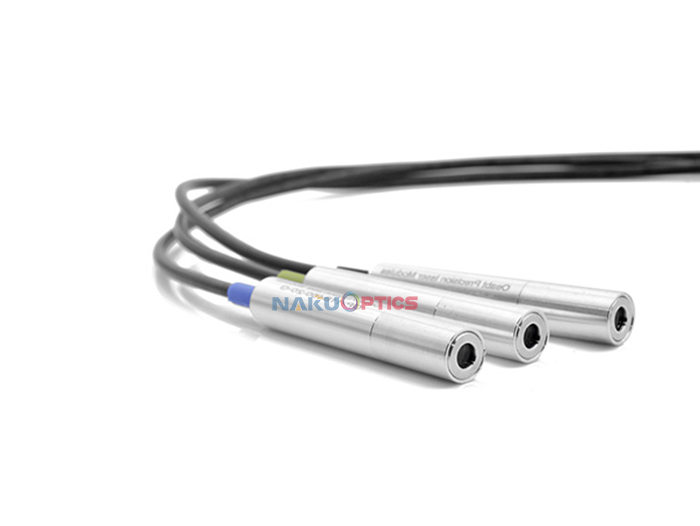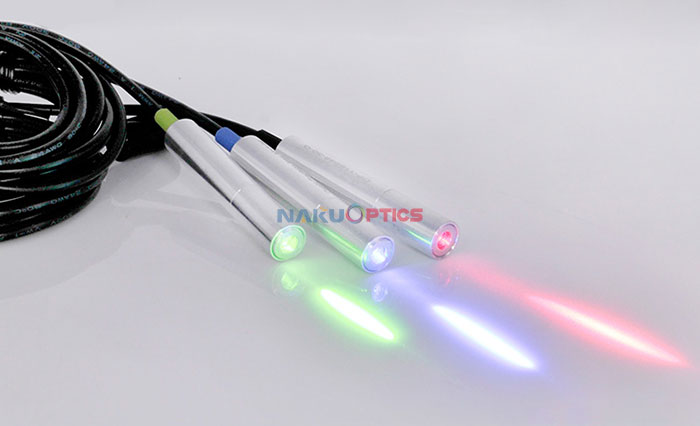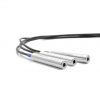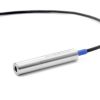648nm High Precision Optical Experiment Linearly Polarized Laser Module 5-10mW Red Diode Laser
Product ID: 216
$99.00 – $109.00
[Features]
The output wavelength range is 405nm~850nm, and different wavelength power can be customized:
Low power consumption, high-efficiency light, stable power output performance, good consistency and long service life;
Original imported glass lens and laser diode, small size, clear light, high collimation and stability; international standard DC interface (5.5*2.1mm);
Linear Polarizer
Linear polarizers consist of dichroic materials. When the light wave passes through the polarizer, one of the orthogonal polarization components is strongly absorbed by the polarizer, while the other component is absorbed weakly, so the polarizer can be used to convert natural light into linearly polarized light. Due to the selective absorption of energy by the polarizer, it cannot be used in high power applications.

Usually the light emitted by the light source, its vibration surface is not limited to a fixed direction but evenly distributed in all directions. This light is called natural light. The polarization of light is the most direct and strongest evidence for the shear wave nature of light.
After the natural light passes through the polarizer, it is changed into light with a certain vibration direction, and the light whose light vector only vibrates in a certain direction is linearly polarized light. The polarizer only allows vibrations parallel to the polarized direction to pass through, while absorbing light that vibrates perpendicular to that direction.


The polarization of light can be observed with the help of an experimental setup:
P1 and P2 are two identical polarizers. The natural light (such as light or sunlight) is directly observed through a polarizer P1. Although the light passing through the polarizer becomes polarized light, it cannot be detected because the human eye does not have the ability to distinguish polarized light. If we fix the orientation of the polarizer P1 and rotate the polarizer P2 slowly, we can find that the intensity of the transmitted light changes periodically with the rotation of P2, and the luminous intensity will repeat every time it rotates 90°. The maximum gradually weakens to the darkest: continue to rotate P2, and the light intensity gradually increases from close to 1000 to the maximum.
The transmitted light through the polarizer, its vibration is limited in a certain vibration direction, we call the first polarizer P1 “polarizer”, its function is to turn natural light into polarized light, but human eyes cannot distinguish polarized light. Must rely on the second polarizer P2 to check. Rotate P2, when its polarization direction is parallel to the polarization plane of the polarized light, the polarized light can pass smoothly, and there is brighter light behind P2. When the polarization direction of P2 is perpendicular to the plane of polarization of the polarized light, the polarized light cannot pass through, and it also becomes dark behind P2. The second polarizer helps us distinguish polarized light, so it is also called an “analyzer”.


Our lasers are all made of high-quality original and imported laser diodes and constant power circuit boards, with optical cylindrical glass lenses and linear polarizers. Small size, clear light, large light-emitting angle and high straightness; the shell is made of aviation aluminum plated insulating paint, which can resist shock, drop and static, as well as high temperature resistance and corrosion resistance. And with a protective rubber cover to prevent bumps during transportation, and dust-proof and drop-proof.

|
Parameter |
Value |
|---|---|
| Shell size |
11mm*62mm (Focus not adjustable) |
| Shell Material |
Environmentally friendly aluminum parts |
| Spot Mode |
Dot |
| Operating Voltage |
DC 12V |
| Operating Temperature |
-50 ~ +50℃ |
| Optical Part |
K9 glass focusing lens + linear polarized lens |
| Working Distance |
2m |
| Output Wavelength |
648nm |
| Power |
5mW / 10mW (Choose) |
| Weight |
32.5g |







| Weight | 4.11 kg |
|---|---|
| Output Power | 5mW, 10mW |














There are no reviews yet.